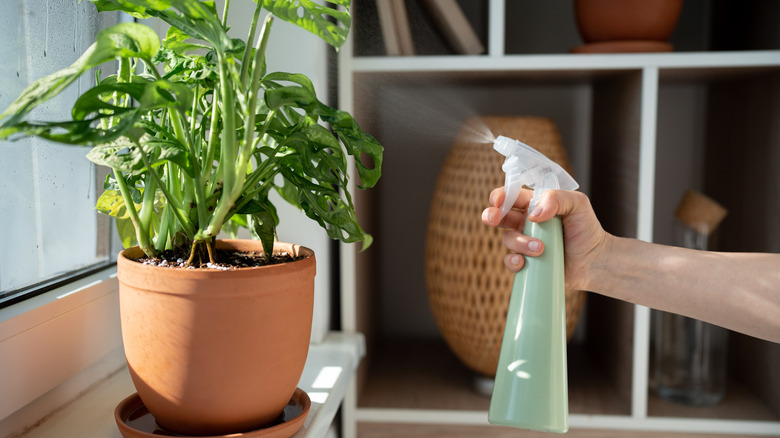The Worst Place To Keep Houseplants During The Winter
Plants like California's chaparral currant (Ribes malvaceum) are hardy enough to not just survive, but even bloom during chilly winter months. Most other plants are not so lucky, especially in colder regions, whether they be perennials that hibernate until the next spring or annuals that need to be replanted. There are ideal methods for overwintering your geraniums or any other flora you want to protect, but more often than not, this process will involve uprooting your hardiest flowers and potting them in your home or a third space like someone's greenhouse. Just be warned: beyond overwintering your garden's prized additions, if you have full-time houseplants, be sure to keep them away from direct heat sources like central heating vents, radiators, or fireplaces.
It's important to bring your plants into a heated room to shield them from winter frost and freezing conditions, but too much heat can be detrimental — especially given how many houseplants are tropical and adapted to rainforest conditions, including ferns and calatheas. Central heating in particular is bad for your houseplants during the winter, as the dry conditions they foster will reduce the humidity that these plants need to thrive. Bathrooms and kitchens tend to have higher humidity levels than the rest of your home, and thus make great holding spaces. Still, there are ways to protect your houseplants wherever they may be during wintertime.
Ways to counteract the effects of central heating on your houseplants
The driving issue behind central heating is that it reduces the ambient moisture in your home, leading to conditions akin to desert air. One way to nip this problem in the bud is installing humidifiers directly into your central heating system; this is a boon not only for your houseplants, wherever they might be during the winter, but also to keep your eyes, throat, lungs, and skin from becoming dry and irritated (not to mention how dried-out floorboards can start to crack).
You can also do more to ensure your plants get the proper amount of water that they need while staying toasty. Spray your plants with water directly, or consider feeding their roots by placing pebbles in a tray of water and then setting the plant on top of those pebbles. Just be careful not to overwater your indoor plants, especially if they're already in moist spaces like the bathroom away from central heating, as this can reduce their oxygen intake and lead to root rot, which is difficult to cure.
Instead of direct water, you can also try protecting your plants with a cloche: a tall, glass bell-shaped covering that keeps humid conditions contained around the plant itself. These can be utilized in whatever room you want, and as a bonus, it could give your home a fun "Beauty and the Beast" aesthetic. Still, no matter how many steps you take to protect your houseplants from dehumidified conditions during the winter, it's best to keep them away from your central heating.

